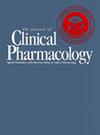静脉注射对乙酰氨基酚治疗新生儿和婴儿术后急性疼痛的随机人群药动学分析和安全性
IF 2.3
4区 医学
Q3 PHARMACOLOGY & PHARMACY
引用次数: 7
摘要
静脉注射对乙酰氨基酚是口服和直肠途径的替代方案,在特定的临床环境中可能是禁忌。这项在患有急性术后疼痛的新生儿和婴儿患者中静脉注射对乙酰氨基酚(Ofirmev,Mallinckrodt Pharmaceuticals,Bedminster,New Jersey)的随机安慰剂对照研究评估了药代动力学(PK)和安全性,以及24小时内重复给药的疗效和药效学。正在接受手术或经历过创伤且预计需要疼痛管理至少24小时的新生儿和婴儿患者(<2岁)被纳入研究。受试者被随机分配接受静脉注射低剂量对乙酰氨基酚、静脉注射高剂量对乙酰氨酚或安慰剂。通过将158名新生儿和婴儿受试者的当前研究中的581个样本与先前开发的模型的结果相结合,更新了静脉注射对乙酰氨基酚的群体PK模型。个体预测与观察到的浓度图显示,结构PK模型符合活性组和安慰剂组的血液和血浆对乙酰氨基酚浓度与时间的关系。新生儿和年幼婴儿以及中老年婴儿的终末消除半衰期延长,与成人的值相似。与安慰剂相比,总的抢救性阿片类药物消耗量相似,因治疗突发不良事件而提前停止静脉注射对乙酰氨基酚的患者明显减少(P<0.01)。对于静脉注射对氨基酚,每6小时接受12.5 mg/kg的新生儿的PK特征与较年轻、中等和较大的婴儿、青少年、,体重<50kg的成年人每6小时接受15mg/kg,体重≥50kg的成年人每隔6小时接受1000mg。本文章由计算机程序翻译,如有差异,请以英文原文为准。
Randomized Population Pharmacokinetic Analysis and Safety of Intravenous Acetaminophen for Acute Postoperative Pain in Neonates and Infants
Intravenous administration of acetaminophen is an alternative to the oral and rectal routes, which may be contraindicated in particular clinical settings. This randomized, placebo‐controlled study of intravenous acetaminophen (Ofirmev, Mallinckrodt Pharmaceuticals, Bedminster, New Jersey) in neonate and infant patients with acute postoperative pain assessed pharmacokinetics (PK) and safety, in addition to efficacy and pharmacodynamics of repeated doses administered over 24 hours. Neonate and infant patients (<2 years of age) who were undergoing surgery or had experienced a traumatic injury and were expected to need pain management for at least 24 hours were enrolled. Subjects were randomly assigned to receive intravenous acetaminophen low dose, intravenous acetaminophen high dose, or placebo. A population PK model of intravenous acetaminophen was updated by combining 581 samples from the current study of 158 neonate and infant subjects with results from a previously developed model. The individual predicted‐versus‐observed concentrations plots showed that the structural PK model fit the blood and plasma acetaminophen concentration‐versus‐time profiles in the active and placebo groups. Terminal elimination half‐life was prolonged in neonates and younger infants and in intermediate and older infants similar to values in adults. When compared with placebo, total rescue opioid consumption was similar and significantly fewer intravenous acetaminophen patients prematurely discontinued because of treatment‐emergent adverse events (P < .01). For intravenous acetaminophen, neonates receiving 12.5 mg/kg every 6 hours had PK profiles similar to younger, intermediate, and older infants, adolescents, and adults weighing <50 kg receiving 15 mg/kg every 6 hours and adults ≥ 50 kg receiving 1000 mg every 6 hours.
求助全文
通过发布文献求助,成功后即可免费获取论文全文。
去求助
来源期刊
CiteScore
5.10
自引率
3.40%
发文量
176
审稿时长
2 months
期刊介绍:
The Journal of Clinical Pharmacology (JCP) is a Human Pharmacology journal designed to provide physicians, pharmacists, research scientists, regulatory scientists, drug developers and academic colleagues a forum to present research in all aspects of Clinical Pharmacology. This includes original research in pharmacokinetics, pharmacogenetics/pharmacogenomics, pharmacometrics, physiologic based pharmacokinetic modeling, drug interactions, therapeutic drug monitoring, regulatory sciences (including unique methods of data analysis), special population studies, drug development, pharmacovigilance, womens’ health, pediatric pharmacology, and pharmacodynamics. Additionally, JCP publishes review articles, commentaries and educational manuscripts. The Journal also serves as an instrument to disseminate Public Policy statements from the American College of Clinical Pharmacology.

 求助内容:
求助内容: 应助结果提醒方式:
应助结果提醒方式:


